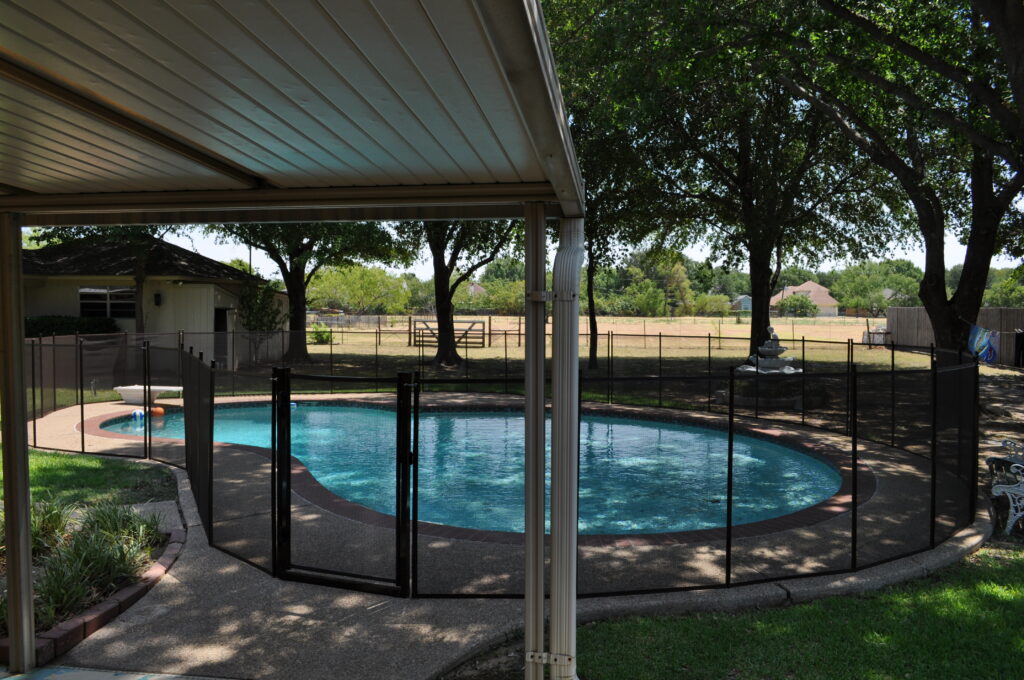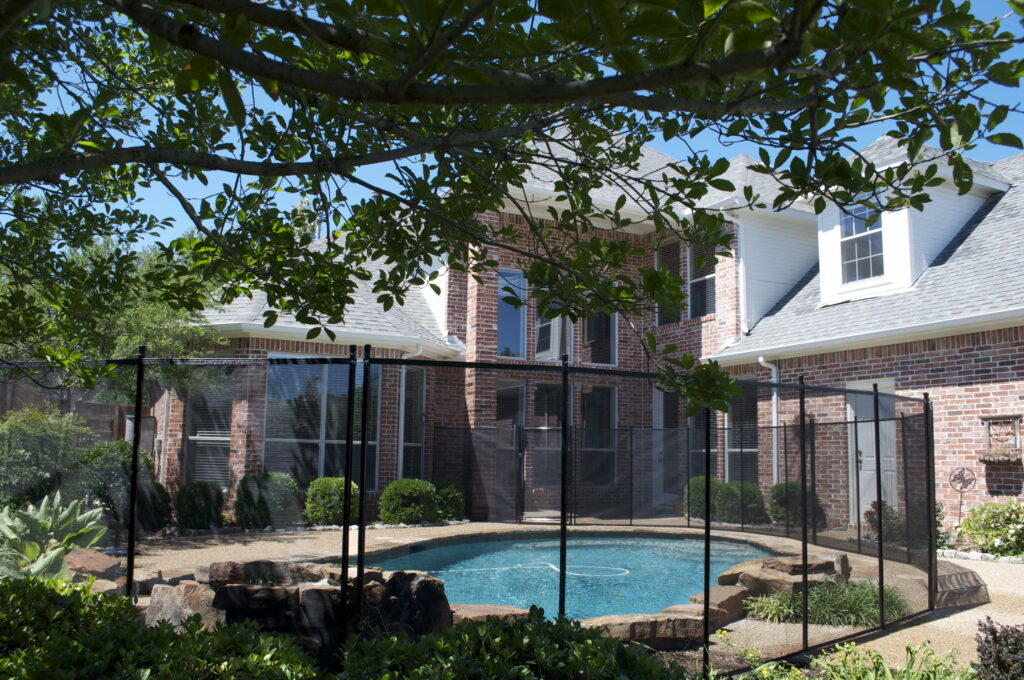Thinking about adding a pool to your Minnesota home? Before you take the first dive, state law says you need a secure, code-compliant fence around it. And mind you, not just any fence. The Minnesota residential pool fence law spells out exact height, gate, and spacing requirements designed to protect children and prevent tragic accidents.
Here, you’ll get a clear breakdown of Minnesota’s statewide pool fence regulations, plus specific rules from cities like Minnetonka, Woodbury, North Oaks, and Ramsey. We’ll walk you through what your fence must include, what materials are allowed, and how to avoid costly penalties.
The base pool fence requirements in Minnesota come from the 2020 Minnesota Residential Code, which aligns closely with the 2018 International Swimming Pool and Spa Code (ISPSC) and IRC Appendix V. These codes define what counts as a compliant barrier around residential swimming pools and hot tubs.
According to Minnesota residential pool fence law, your pool barrier must be a minimum of 48 inches tall, measured vertically from finished ground level on the side facing away from the pool. This height is a critical safety threshold, as it prevents small children from climbing over or reaching into the pool area.
Fences taller than 48 inches are allowed and often recommended for added security, but going below the minimum fence height violates code, even if the pool is rarely used.

The pool safety barrier shall be constructed so as not to have any openings, holes, or gaps larger than 4 inches in vertical or horizontal direction, except for the doors and gates. The “no 4-inch sphere” rule ensures a small child cannot fit their head or torso between the gaps, reducing entrapment risks.
Key considerations:
Even small deviations can result in failed inspections, so it’s crucial to measure both top and bottom openings across the entire fence length.
Minnesota code requires that the bottom of the fence sit no more than 4 inches above finished grade (like concrete, pavers, or tightly packed soil). This prevents children or animals from crawling underneath.
If the fence is installed over loose surfaces like gravel, mulch, or grass, a slightly larger clearance (up to 4 inches) may be allowed, but only if the barrier is solid and meets all other requirements.
Gates are often the weakest point in a pool barrier, so Minnesota law has strict standards for gates leading to the pool area. Gates must be self-closing and self-latching without any additional action, with a latch placed at least 54 inches above ground, well out of reach of curious children.
When installing the pool gate, homeowners need to make sure it swings outward, away from the pool, to resist accidental entry if a child pushes against the gate.
If placing the latch at this height isn’t possible due to design or aesthetics, Minnesota law offers an alternative configuration:
As an additional measure, most homeowners opt for a safer alternative- the MagnaLatch system. The Magna Latch is a top-pull magnetic safety latch, using a patented magnetic locking technology that keeps the door securely closed at all times.
Minnesota doesn’t restrict your pool fence design to one specific material, but it must meet functional safety standards. The fence must be:
Minnesota often allows various pool fence materials, including mesh, aluminum, vinyl, or wood.
While the statewide code provides the baseline, many cities across Minnesota have their own local ordinances. Here’s how five cities define their own pool barrier requirements:
Unlike the statewide minimum of 48 inches, the Minnetonka city code mandates a higher pool fence height. This local regulation reflects a more stringent approach to pool safety and overrides the state minimum for all residential properties within city limits.
Any pool with water more than 24 inches in depth must be surrounded by a fence that’s:
| Requirement | Standard |
| Fence Height | Must be at least 5 feet in height |
| Gap Clearance | The opening between the bottom of the fence and the ground shall be no more than 3 inches. |
| Openings | There shall be no openings greater than 4 inches in width |
| Gates | All gates must be equipped with self-closing and self-latching devices capable of being locked and placed on top of gates where no children can reach. The gate must open outward, away from the pool. |
In Woodbury, pool fencing must comply with the state code, which the city has adopted in its local code, but zoning overlays require additional approvals depending on lot location and setbacks.
All private swimming pools in Woodbury shall adhere to the following requirements:
| Requirement | Standard |
| Fence Height | All pools must be surrounded by a pool fence of at least 4 feet in height. |
| Gap clearance | The opening between the bottom of the fence and the ground shall be no more than 4 inches. |
| Openings | All fences shall be constructed so as not to have openings, holes, or gaps larger than 4 inches in the horizontal and vertical direction. |
| Gates | All gates leading to the pool area must be equipped with a self-closing and self-latching device to prevent unauthorized access. |
Ham Lake does not have its own unique pool fence height beyond the state standard, but it includes helpful clarifications on fence type and placement:
| Requirement | Standard |
| Fence Height | Every in-ground swimming pool shall be enclosed by a pool fence of at least 4 feet in height. |
| Gap clearance | The opening between the bottom of the fence and the ground shall be no more than 4 inches. |
| Openings | All fences shall be constructed so as not to have openings, holes, or gaps larger than 4 inches in horizontal and vertical direction. |
| Gates | All gates leading to the pool area must be equipped with a self-closing and self-latching device to prevent unauthorized access. |
North Oaks enforces stricter pool safety standards than the Minnesota state code by requiring a higher fence height. This elevated requirement reflects the city’s commitment to enhanced residential safety and takes precedence over the state’s 48-inch minimum for all pools installed within city boundaries.
| Requirement | Standard |
| Fence Height | A fence of at least 5 feet in height shall surround the pool. |
| Gap Clearance | Any openings between the fence’s bottom and the ground level shall not exceed 3 inches. |
| Openings | All fences must be built without any openings, gaps, or holes greater than 4 inches in either the horizontal or vertical direction. |
| Gates | All gates shall be self-closing and self-latching with a latch placed at no less than 4 feet above ground level. Gates leading directly to the pool area shall be constructed and placed so as to be inaccessible to small children. |
While Ramsey generally follows the statewide pool fence requirements, it differs in the fence openings. The city also conducts inspections at both the framing and final stages to ensure full compliance.
| Requirement | Standard |
| Fence Height | An in-ground pool must be surrounded by a non-climbing fence at a minimum height of 4 feet. |
| Gap Clearance | Any openings between the fence’s bottom and the ground level shall not exceed 4 inches. |
| Openings | All fence openings shall be constructed so that no open space within them is wider than 6 inches. |
| Gates | All gates shall be self-closing and self-latching with a latch placed at no less than 54 inches above ground level. Gates leading directly to the pool area shall be constructed and placed so as to be inaccessible to small children. |
The City of St. Michael follows Minnesota’s baseline pool safety requirements under the Residential Code, but may include zoning-specific additions related to placement or aesthetics. Property owners should confirm details with the local building department before installation.
| Requirement | Standard |
| Fence Height | In-ground pools shall be completely enclosed by a safety fence that’s at least six feet in height. |
| Gap Clearance | The distance between the bottom of the fence and the ground shall not exceed 4 inches at any given point. |
| Openings | All openings on the safety fence shall not allow the passage of 4 inches in diameter. |
| Gates | All fence openings or points of entry shall be equipped with self-closing and self-latching gates, placed at the top of the pool fence, inaccessible to small children. |
Yes. In Minnesota, a dwelling wall can serve as part of the pool barrier as long as any doors leading to the pool area are protected by alarms or have self-closing, self-latching mechanisms. This setup must still meet the intent of the law: restricting unsupervised access to the pool.
Only in select cities like North Oaks, where local code allows ASTM-compliant latchable safety covers as an alternative to fencing. Most cities still require a physical fence regardless of cover type. Check with your municipality before relying on a cover alone.
Yes. In nearly every Minnesota jurisdiction, installing a pool or pool fence requires a building permit, and often a zoning review. Inspections are conducted to confirm the barrier meets required height, spacing, and gate specs. Failing to get a permit can lead to fines and delays.
Yes. Removable mesh fences are legal if they meet ASTM F2286 standards. These fences must be tensioned properly, anchored securely, and tall enough (minimum 48 inches). They’re popular for being easy to remove, but must be installed professionally to pass code.

Complying with the Minnesota residential pool fence law is more than a box to check; it’s your legal responsibility and a vital layer of safety for children, pets, and guests. From the state-required 48-inch minimum fence height to stricter local codes in places like Minnetonka, North Oaks, and Ramsey, homeowners must understand the full picture before building or upgrading a pool.
If you’re planning a pool or fence upgrade, always start with your local building department. And when in doubt, build to exceed the minimum. Safe pools start with safe fences, and you’re now equipped to do both.
Please fill out the form below with your information. Your local dealer will be notified about your inquiry.
Please fill out the form below with your information. Your local dealer will be notified about your inquiry.